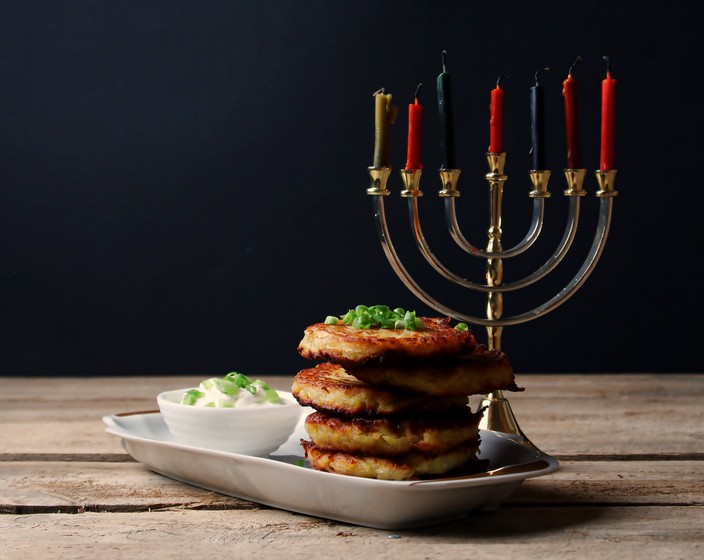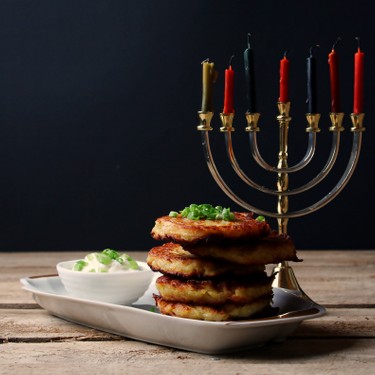Hanukkah: Latkes, Lights and Legends




Let’s start with the basics: Hanukkah (or Chanukah) is an eight-day Jewish holiday that celebrates the miracle of light triumphing over darkness — both literally and symbolically. It usually falls in December, overlapping with other winter holidays, but its roots go way, way back.
More than 2,000 years ago, the Maccabees, a small Jewish rebel group, defeated the mighty Greek-Syrian army and reclaimed the Second Temple in Jerusalem. When they went to relight the sacred menorah (a seven-branched candelabrum), they discovered only enough pure olive oil to last one day.
Miraculously, that single jar burned for eight whole days, long enough to prepare more oil. That’s the Hanukkah miracle — and the reason the holiday lasts eight nights, and why oil-fried foods (hello, latkes and sufganiyot) play such a starring role.
Beyond the oil itself, Hanukkah’s story is really about resilience — a small flame that refused to die out. Over time, it’s come to symbolize hope, courage, and the strength to keep shining even when the odds feel impossible.
Lighting the menorah isn’t just about tradition; it’s about spreading light, warmth, and hope during the darkest time of the year. Families often place it by a window or doorway — a way to “publicize the miracle,” sharing the light with the world.
Each candle flicker tells the story of survival and renewal, often accompanied by blessings, songs, and a cozy crowd of family (and food) gathered nearby.
Each side of the dreidel bears a Hebrew letter: Nun, Gimel, Hei, and Shin — standing for “Nes Gadol Haya Sham,” meaning “A great miracle happened there.”
And yes, it’s also used for a little friendly gambling — usually with gelt, those shiny chocolate coins (or sometimes real ones) given to kids as treats or rewards for learning. It’s a nod to joy, generosity, and a touch of sweet competition.
Hanukkah today is all about light, laughter, and latkes. It’s less formal than many other Jewish holidays — more about joy, family, and celebrating miracles big and small.
While the miracle of oil remains at the heart of Hanukkah, every family brings its own flavor to the table — blending old-world recipes with modern twists, and passing down traditions one latke at a time.
You’ll find everything from classic recipes passed down for generations to creative remixes (think vegan latkes, matcha sufganiyot, or air-fried brisket). Because if there’s one modern miracle we can all agree on, it’s a crispy latke that doesn’t splatter oil everywhere.
Curious what to serve? We’ve got you covered:
Crispy, golden, and iconic. The quintessential Hanukkah dish — fried in oil to honor the miracle, devoured in seconds.
Fluffy, jam-filled donuts dusted with powdered sugar. The sweetest symbol of the holiday.
Rich, melt-in-your-mouth brisket that’s slow-cooked to perfection. The kind of dish families gather around.
Golden braided bread that feels like a hug in loaf form. Perfect with honey or for soaking up brisket sauce.
A modern twist on a Jewish classic — creamy, savory, and baked until beautifully golden.
Comfort in a bowl. Soft matzo balls in clear broth — perfect for chilly nights and cozy gatherings.
Flaky, jam-filled pastries that turn any table into a bakery window. A must-have Jewish treat year-round.
Sweet, tangy, and essential for pairing with latkes. (Pro tip: make extra — it disappears fast.)
Hanukkah isn’t just about the past — it’s about finding joy and meaning in the present. Whether you’re frying latkes for the first time or passing down your bubbe’s brisket recipe, it’s a celebration of togetherness, resilience, and delicious miracles.
So grab your menorah, spin that dreidel, and set your table with recipes that tell the story of light — from golden fried potatoes to jam-filled donuts and everything in between.
Keep the lights burning and the oil sizzling — your Hanukkah table deserves it.